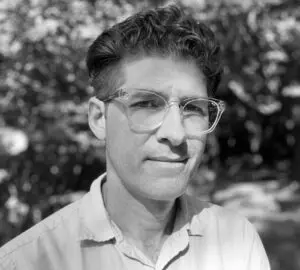Richard Ocejo, a sociology professor at the City University of New York, is the author of Sixty Miles Upriver: Gentrification and Race in a Small American City, a portrait of Newburgh.
What drew you to write about Newburgh?
I moved to the Hudson Valley from New York City in 2016 with my family. I’m an urban sociologist. I needed something new to do, and with Newburgh being nearby, I started hanging out there and got interested in the idea of what a small city undergoing revitalization looks like and how it impacts people who live there.

What are scholars who study gentrification missing by only looking at New York or Detroit?
They’re missing the important role of scale and intimacy. When you have smaller scale and greater housing affordability, you get more people who are homeowners and property owners and investors and business owners right from the start of a gentrification process. You have people with greater opportunities to get involved in their neighborhoods and city government and play vital roles in making decisions on the direction the city goes in. That’s not an outcome that we typically see in large cities.
At what point did you realize that you couldn’t write about gentrification in Newburgh without talking about race?
Within the first year of a four-year process. It was obvious that race had a role, simply because of the racial differences between most of the newcomers and most of the existing residents, and also the ways people spoke about race. The mostly white gentrifiers and newcomers were aware of the racial differences. The existing residents, most of whom are people of color, would talk about race in much more upfront and conscious ways. It was right there in my face. They were telling me that it was an important part of what was happening.
Is there such a thing as gentrification that benefits everyone?
I’m not familiar with it. It’s a complicated process. Gentrification is a subset of a larger affordable housing crisis. Scarcity can make an unequal housing market worse. So how can you address residential, social or political displacement in a manner that’s equitable? When you’re dealing with these inherent power disparities, it’s remarkably challenging. It’s an extreme version of what we see with power disparities in neighborhoods and communities across the country, even non-gentrifying ones. Within schools, for example. I don’t provide many answers in the book, because I wanted the ideas behind what is happening in a small city to serve as takeaways for people who try to come up with solutions.
Has the book changed how you interact with your community?
At the heart of my book is: What do we owe to the communities that we move to when we’re newcomers? What obligations do we have to neighbors who have been calling this place home for much longer than we have? Do we disrupt or enhance? That’s universal for anybody moving into any community, which guided me in my actions toward my neighbors as I got more involved. It’s helpful to remember that there’s an order here that’s existed before me and will outlive me. How can I insert myself into that in a way that’s not disruptive or harmful but respectful and generative?

